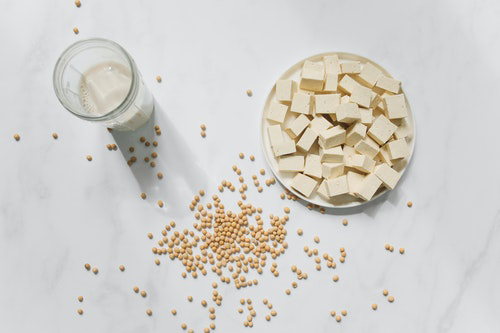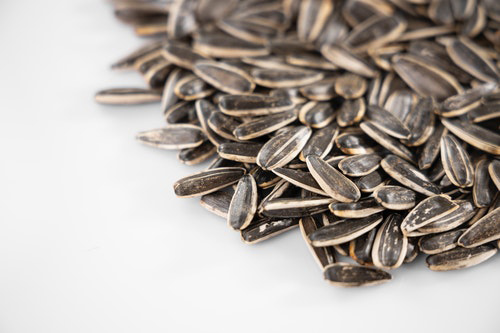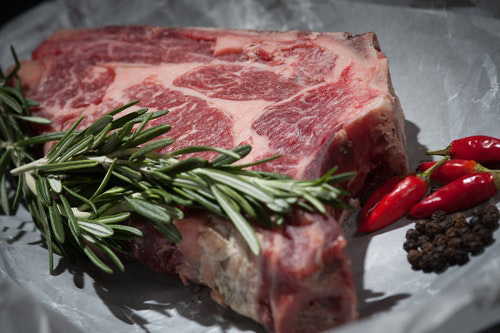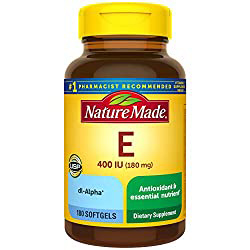Contents
This article is about the best foods for anemia. However, before we get into these foods to help with anemia, let’s learn more about this condition.

The word anemia means “lack of blood”. However, it describes a reduction in the blood’s erythrocyte (red blood cell) count. These cells are those that give blood its red color and those that transport life-giving oxygen to all of the body’s cells.
Anemia may be caused by various mechanisms. Diet plays an essential role since foods provide the necessary nutrients for blood cell production.
- Iron, proteins, vitamin B12, and folates or folic acid are the most important for these nutrients.
- Vitamins B1, B2, B6, C, E, and copper are also necessary for blood production.
These are the most frequent causes of anemia:
- Insufficient blood production: Erythrocytes (red blood cells) live approximately one hundred days, and the bone marrow constantly produces new blood cells. The marrow requires iron, proteins, folic acid, and various vitamins. The scarcest nutrient is iron, and the anemia produced under these circumstances is called iron deficiency anemia.
- Blood loss, whether from acute hemorrhage or smaller hemorrhages. In some cases, these hemorrhages may go unnoticed, such as stomach or intestinal bleeding.
- Destruction of blood cells: This produces hemolytic anemia, in which the red blood cells are destroyed for various causes and diseases.
Best Foods for Anemia
LEGUMES: All are rich in iron, folates, proteins, and other nutrients needed for blood production.

SOY: Soy is the most iron-rich of legumes. Its derivatives are also good sources of this mineral. For example, “tofu” contains 5.36 mg/100 g of iron (about three times more than meat or soft cheese), and soymilk or soy beverage contains 0.58 mg/100 g (about 10 times that of cow’s milk).
FRUIT: All fruits facilitate the absorption of iron, particularly acidic fruits. A study conducted in Houston (Texas, USA) found that when iron is taken with milk, the absorption rate is 5.7%. On the other hand, when it is taken with fruit juice, the rate reaches 13.7%.
LEAFY GREEN VEGETABLES: Leafy green vegetables such as spinach, chard, and lettuce are iron-rich. They also provide magnesium (which forms part of chlorophyll) and trace elements such as copper, which foster the development of blood cells in the bone marrow.
ALFALFA: Alfalfa sprouts contain almost 1 mg/100 g of iron, approximately the same level as beef. Alfalfa also provides vitamin C, which facilitates iron absorption, as well as a variety of minerals and trace elements involved in blood production. Alfalfa’s general effect is anti-anemic and tonic.
WATERCRESS: Watercress contains iron, vitamins, and minerals that promote blood production.
RED BEET: Beets are among the best foods for anemia thanks to its richness in iron (as much or more than meat), and vitamin C. Due to some of its little-understood substances, it stimulates blood production in the bone marrow. The most effective way to use beets is by drinking 50 to 100 ml of freshly prepared juice before meals.
SPINACH: Spinach contains more iron than meat, although it is difficult to absorb. It supplies various vitamins and trace elements that promote red blood cell production.
Grapes are Extremely Rich in Iron
AVOCADO: Avocados are one of the most iron-rich fruits, easily absorbed since they contain vitamin C.

SUNFLOWER SEEDS: Sunflower seeds are rich in iron, other minerals, and vitamins B and E. Eating unsalted sunflower seeds is particularly recommended for those undernourished, anemic, or convalescing.
PISTACHIO: Pistachios are another of the best foods for anemia because of their rich iron, copper, and trace elements that mutually potentiate their anti-anemic properties. Copper facilitates the absorption and assimilation of iron.
GRAPE: Grapes find themselves on the list of best foods for anemia because they are the most iron-rich of the fresh fruits. Also, grapes contain copper and other trace elements that facilitate the absorption and assimilation of iron.
PASSION FRUIT: Passion fruit is a good source of both iron and vitamin C, which makes it a great addition to the list of best foods for anemia.
APRICOT: Despite not being particularly rich in iron, the apricot, fresh or dried, has a significant anti-anemic effect. An apricot treatment may be compared to a treatment using the liver in terms of effectiveness in improving iron deficiency anemia.
Molasses is Iron and Mineral-Rich

LEMON: Lemon facilitates the absorption of nonheme iron in fruits, vegetables, legumes, grains, milk, and eggs because of its vitamin C and organic acid content. A few drops of lemon juice added to salads or grain or legume dishes improve iron absorption and are particularly beneficial in cases of anemia.
SPIRULINA: This microscopic blue-green bacterium, considered an alga, is very rich in iron. It also contains vitamin B12, essential in certain types of anemia. However, some investigators believe that the vitamin B12 found in spirulina is not well assimilated since it is chemically different from the proper vitamin.
MOLASSES: Molasses is a great member of the list of best foods for anemia because it is among the most iron- and mineral-rich natural products. As a sweetener, it is an excellent replacement for white sugar, which has virtually no iron or other minerals.
Folates are Essential for Red Blood Cell Production
IRON: This is the nutrient most involved in red blood cell production and the one that is most often in short supply. The problem with iron is its absorption within the intestine. This is particularly so for nonheme iron (that from non-meat sources). Vitamin C, certain acids, and copper facilitate the absorption of this type of iron.

MEAT: Meat, particularly liver, has been used for generations for anemia because of its heme iron content, which is more easily absorbed than the nonheme iron found in plant-based foods, milk and eggs, and vitamin B12. Although meat may be useful in certain cases, it is not essential for blood production, and its use presents many drawbacks.
VITAMIN B12: The lack of this vitamin produces a few very large red blood cells, known as megaloblastic anemia or large cells. Although the daily need for this vitamin is very small, a poorly maintained strict vegetarian diet can lead to a deficiency.
FOLATES: Folates are necessary for the production of red blood cells. Folate deficiency reduces the number of cells produced and increases their size. Folates are found mainly in legumes and green leafy vegetables.
B GROUP VITAMINS: Vitamins B1, B2, and B6 contribute to blood cell production, and their lack can aggravate any anemia.
VITAMIN E: Vitamin E deficiency leads to fragile red blood cells that are easily destroyed, which leads to hemolytic anemia. A proper supply of vitamin E stabilizes these cells and avoids the condition.
VITAMIN C: Vitamin C can increase iron’s bioavailability (a measure of absorption) by almost double. Vitamin C has also been shown to compensate for the reduction in iron absorption caused by the phytates contained in whole grains.
DISCLAIMER: All content on this website is presented solely for educational and informational objectives. You should not rely on the information provided as a replacement for advice, diagnosis, or treatment from a qualified medical expert. If you are pregnant, nursing, or have any preexisting medical concerns, you should talk to your doctor before using any herbal or natural medicines.
REFERENCES
- George D. Pamplona-Roger, M.D. “Encyclopedia Of Foods and Their Healing Power.” George D. Pamplona-Roger, M.D. Encyclopedia Of Foods and Their Healing Power. Trans. Annette Melgosa. Vol. 2. Chai Wan: Editorial Safeliz, 2005. 119-120. [Best foods for anemia]
- National Heart, Lung, and Blood Institute: https://www.nhlbi.nih.gov/resources/your-guide-anemia
- Mayo Clinic: https://www.mayoclinic.org/diseases-conditions/iron-deficiency-anemia/symptoms-causes/syc-20355034?p=1

